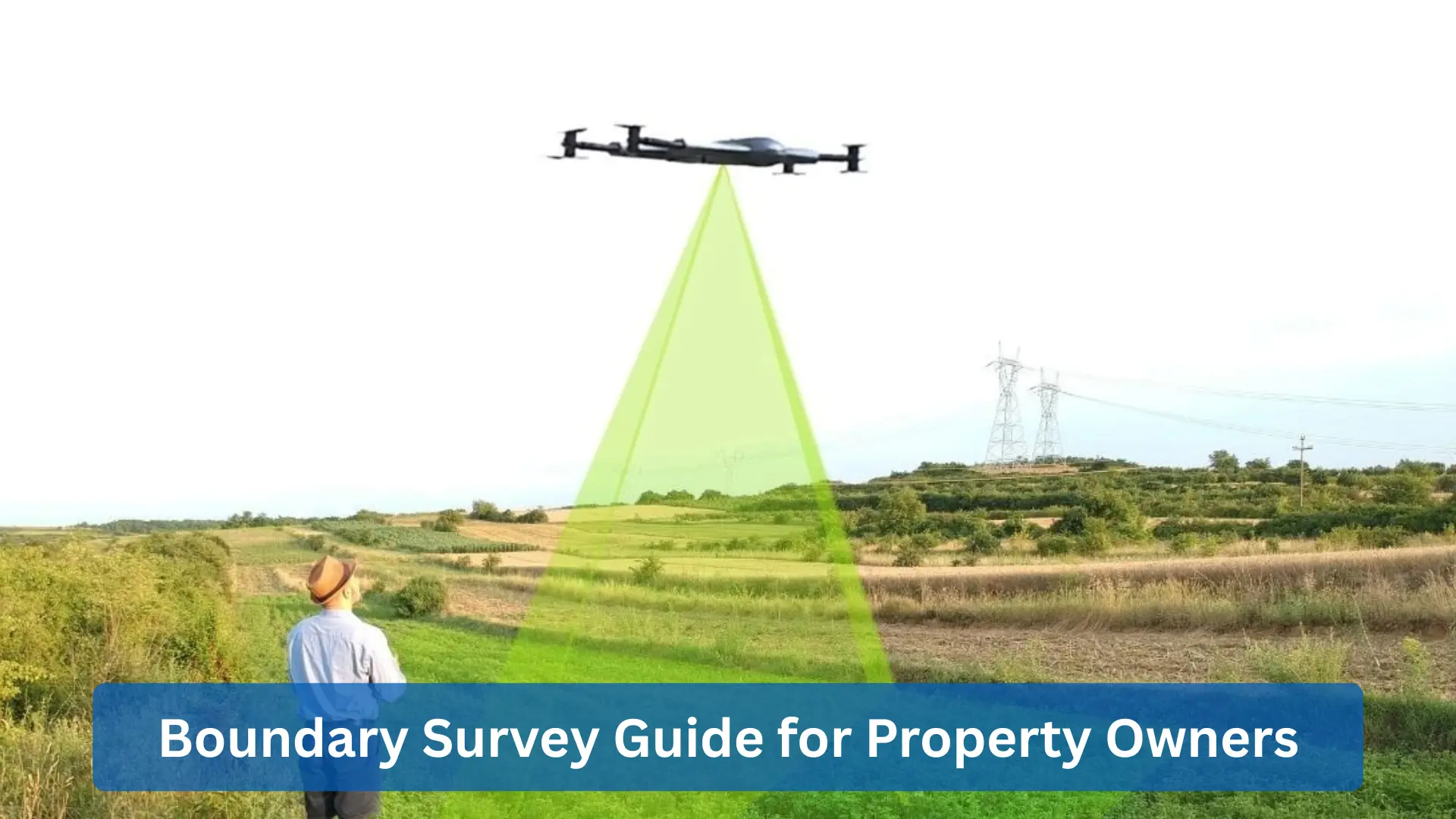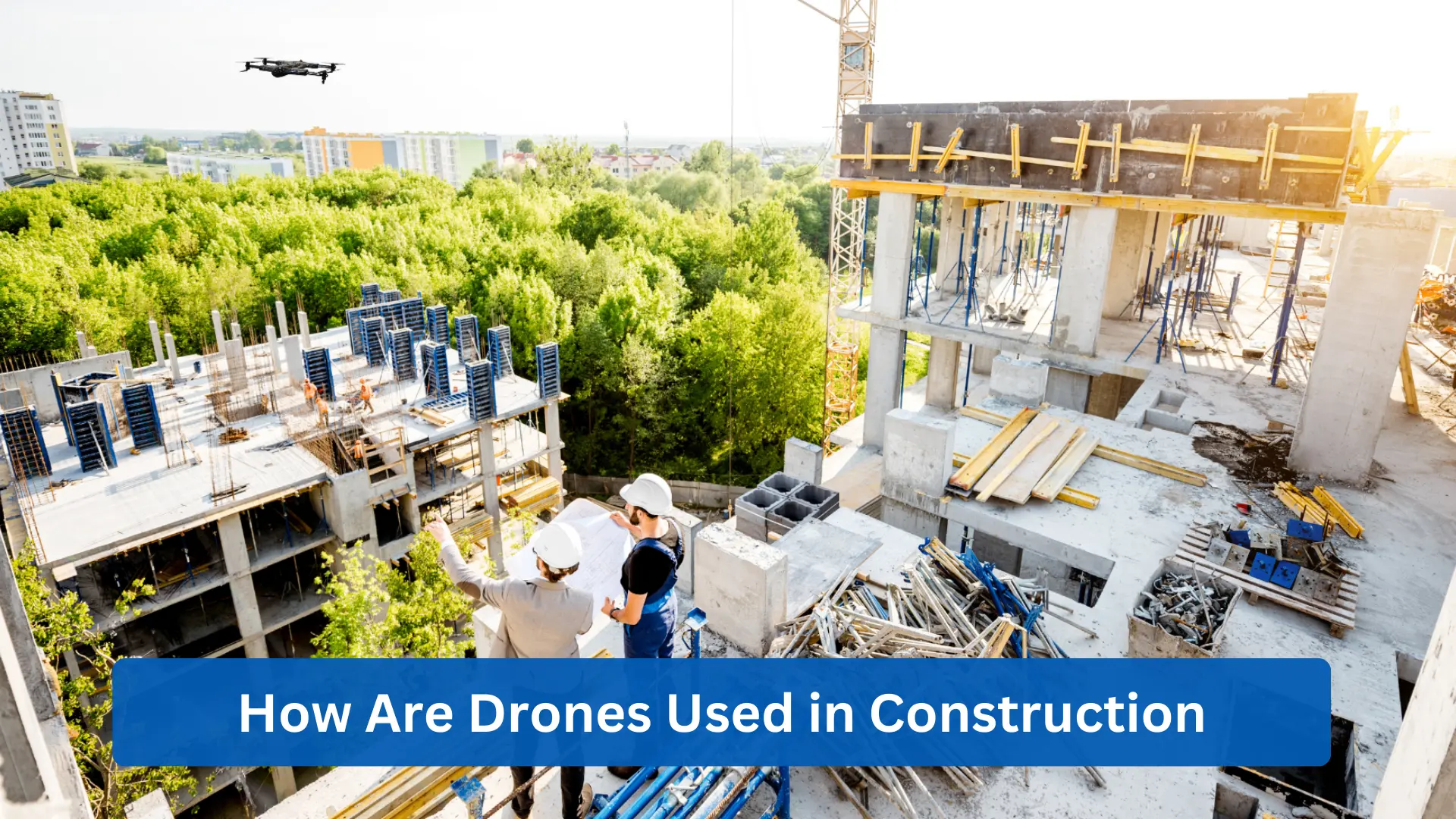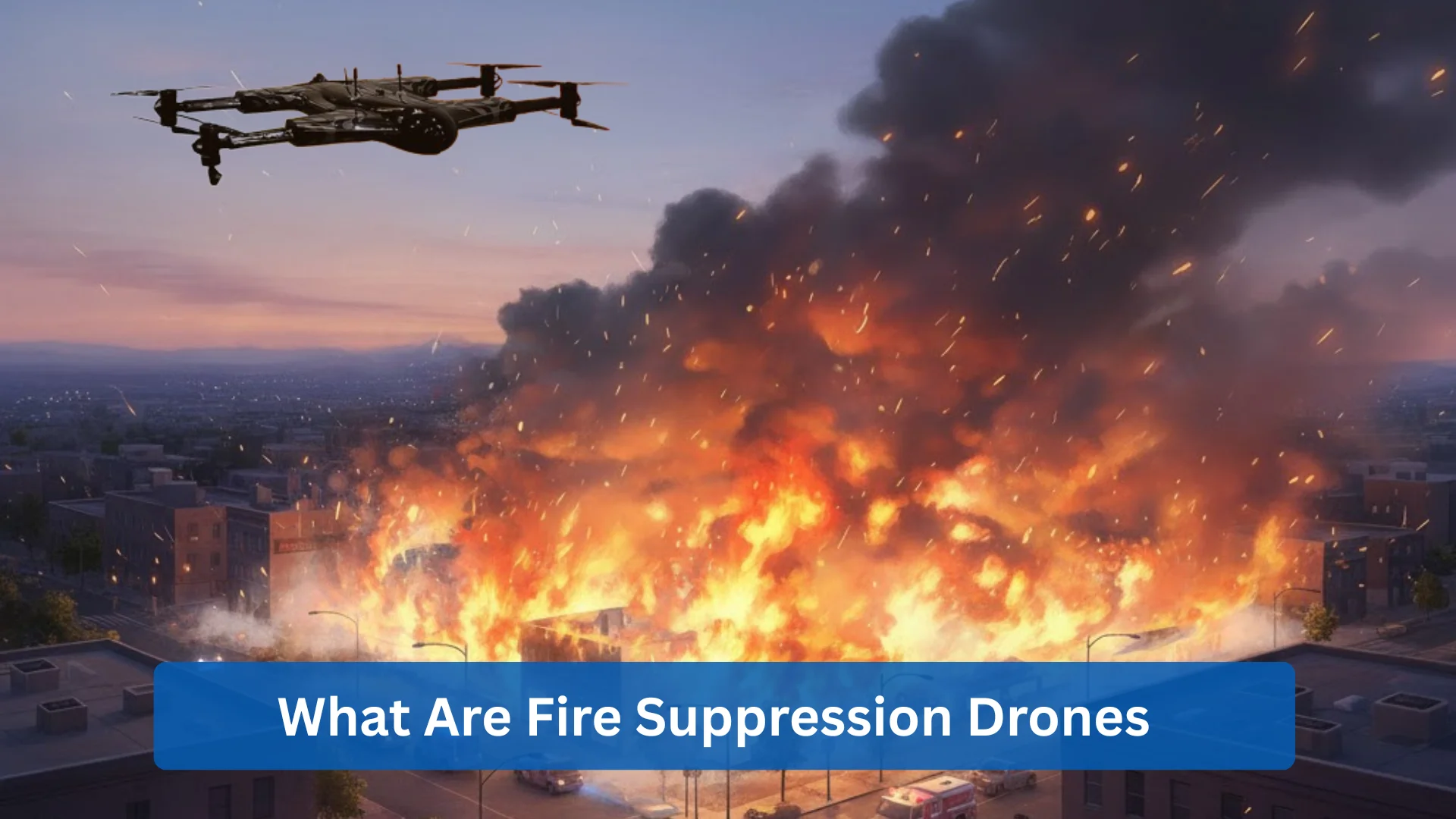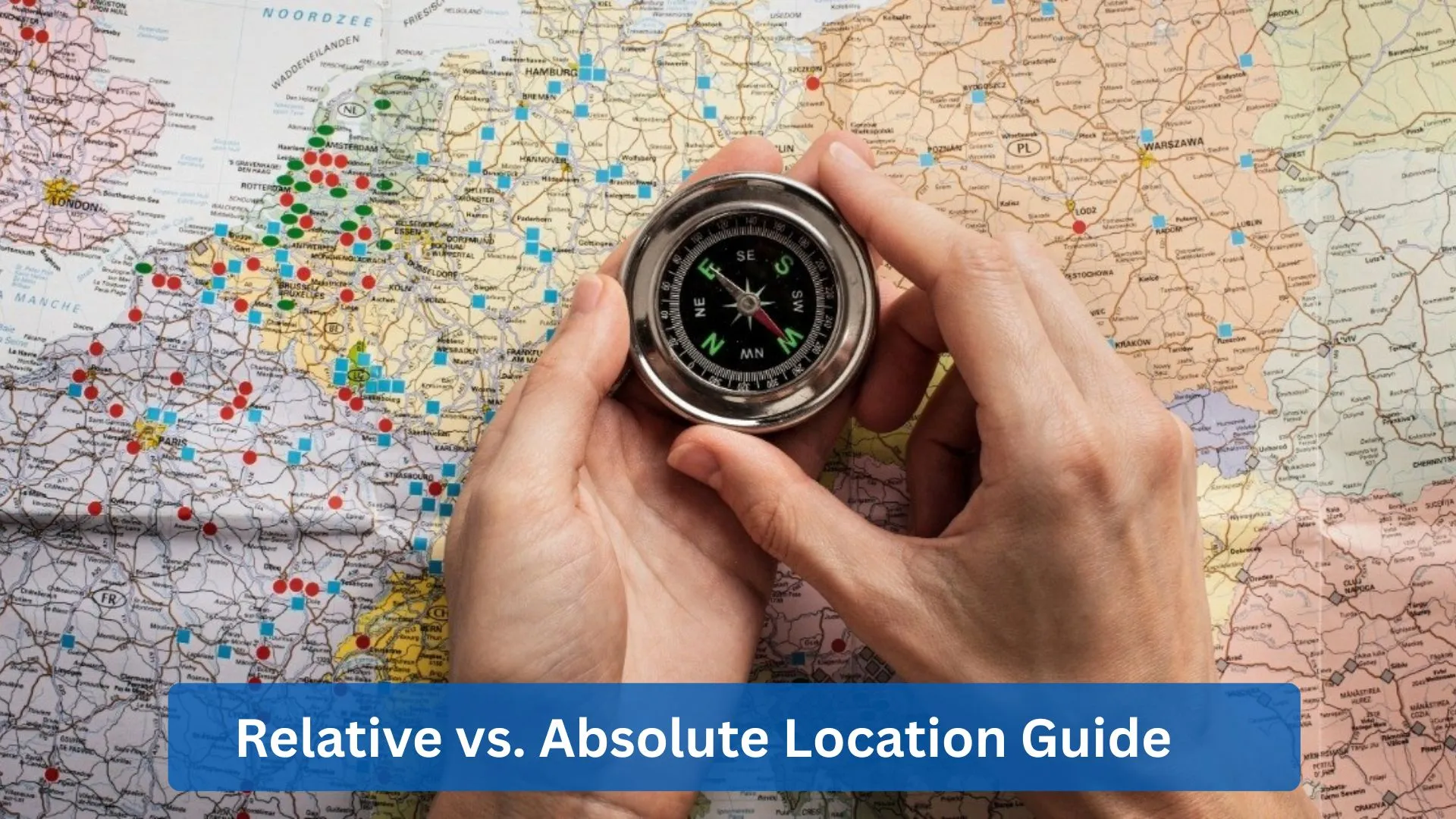Waterproof Drones Explained Features Benefits and Uses
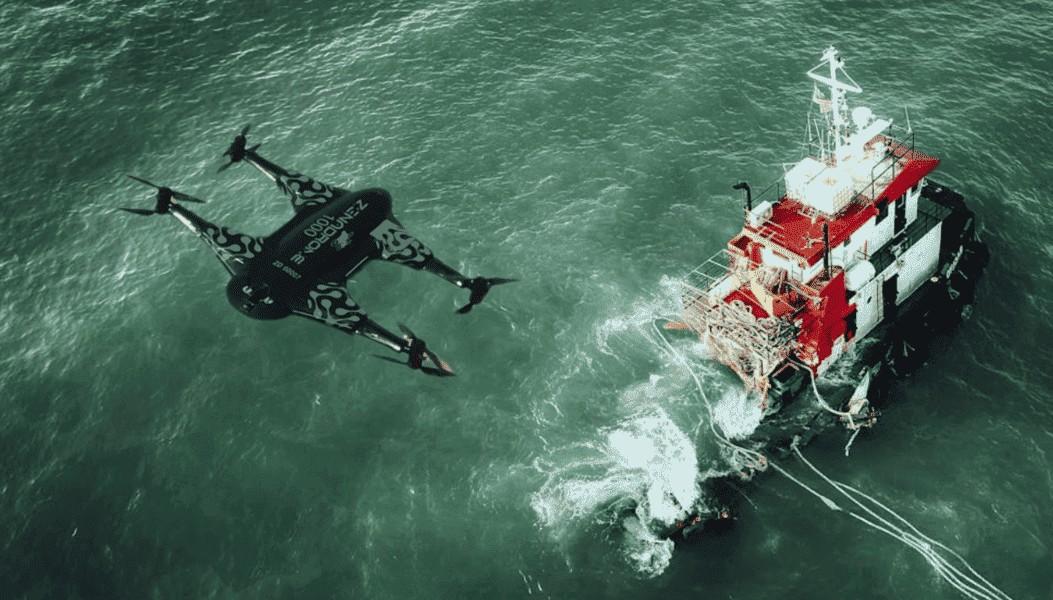
Waterproof drone are made to withstand moisture, and they’re built to handle situations such as wet or harsh conditions that other ordinary drones cannot handle. Whether you need to capture beautiful scenes that include exposure to water or help out during emergencies, these drones can do their job in these situations. On the other hand, ordinary drones are vulnerable to these situations. They can easily get affected when it rains or when it is humid. However, Waterproof drones are made with special seals and coatings. They can work properly during rain, by the lakes, or in the snow. This opportunity will allow photographers, rescue teams, and hobbyists to use their drones even in this harsh situation.
Having a waterproof drone allows the user to experience its extra abilities that ordinary drones do not have. Whether it is the best waterproof drones for capturing a sport that immerses in water, such as a surf competition, or waterproof drones for monitoring wetlands, these models are built to endure where others cannot. While others may ask, “Are drones waterproof by nature?” the answer is no. You should only use drones that meet the particular standards when flying in wet weather. The market is expanding rapidly, with options like the best waterproof drone new featuring 4K cameras and enhanced GPS systems. Users increasingly seek waterproof drone models equipped with cameras to meet their specialized needs. Whether you’re flying for fun or function, this guide covers choosing and using a waterproof drone that fits your mission.
How Waterproof Drones Work?
We design drones for rainy conditions to fly in wet environments. It is built in a way that keeps the drone’s flight controls, cameras, and batteries safe from the possible water damage that it might experience, which might also be the case with ordinary drones.
How Waterproof Drones Are Designed and Built
Numerous features make these drones different from ordinary drones.
- IP Ratings: Drones with a rating of IP97 or higher can withstand being underwater for a short time.
- Sealed Compartments: These drones have improved their ability to prevent water from getting inside the drone’s electronics through their upgraded compartments.
- Hydrophobic Coatings: These drones also have coatings to ensure that water slides away from the drone and prevents it from getting inside.
- Custom Gaskets & O-Rings: This feature can seal the motors, batteries, and body parts to prevent water from entering.
An important note is that you should remember that these drones are not the same as water-resistant drones; you can submerge drones for wet environments, but this does not apply to water-resistant drones.
Standard Features of Drones for Wet Environments
There are standard features that are known for drones that are waterproof:
- Corrosion-resistant airframe
- The camera is surrounded by a housing that stops it from fogging up.
- Insulated motors and batteries
- There are special lens covers to keep rain out.
These features matter especially when using waterproof drones with a camera in salty water. Some drones are designed for rainy conditions and include built-in drainage systems to remove excess water. Drones with an IP68 rating can fly in the rain. It makes them perfect for taking videos or doing surveys when the environment is wet.
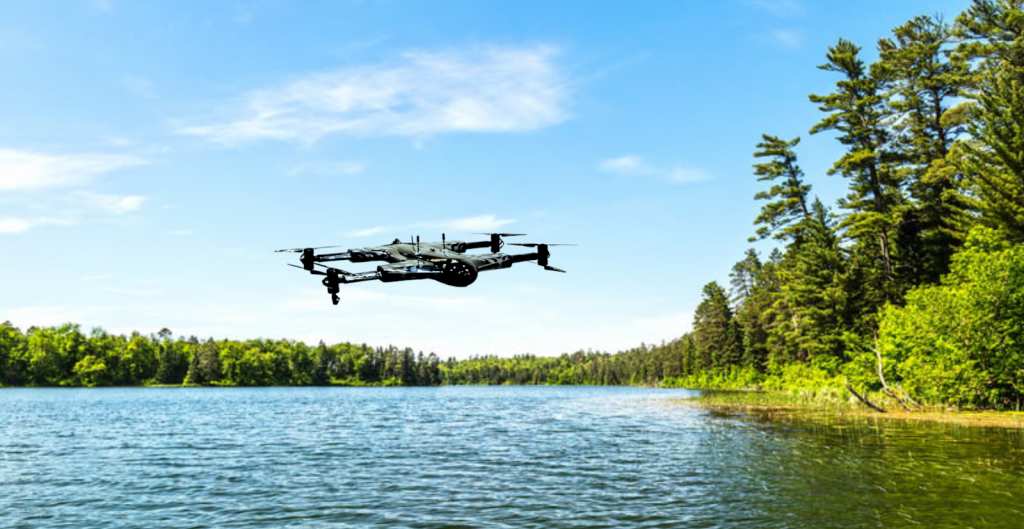
Types of Waterproof Drones for Flying in the Rain
Waterproof Drones for wet environments are designed to be protected from water. However, their design extends beyond water protection, as these drones can perform various tasks. Each one has special things that set it apart from ordinary drones. Learning about these waterproof UAVs can help you choose the best one, whether you’re into photography, surveillance, or leisure.
Waterproof Drones Designed for Photography and Filmmaking
When aerial photography and filmmaking situations become tough, people rely on waterproof UAVs to take shots, especially in wet environments. Suppose you are taking a video with a waterproof camera drone near water or shooting a wildfire near a lake. In that case, these drones benefit photographers and videographers who are dealing with unpredictable and changing weather conditions. The waterproof drones with a 4K camera are favored for their high-definition image quality, even in rain or near-wet environments.
Key features:
- 4K camera protection
- Enhanced stabilization systems
- Waterproof build quality
For outdoor photographers and filmmakers who require the best waterproof drone, these models provide robust solutions for creative shots without worrying about weather disruptions.
Water Resistant Drones for Aerial Surveillance and Mapping
Waterproof UAVs, such as a waterproof drone with a 4K camera, are not only limited to photography and videography, but they are also known to be used for surveillance and mapping, especially in industries that may involve environmental monitoring, inspecting buildings, or emergency response. We use them to inspect hard-to-reach or unsafe spots, like flood zones or remote water areas. They are helpful in real situations because they can fly even when it’s raining or over water.
Key use cases include:
- Environmental research in lakes, rivers, or wetlands
- Search and rescue operations in wet or flooded conditions
- Mapping inaccessible terrain, primarily coastal or maritime environments
- These waterproof UAVs help you get data in extreme places where regular methods don’t work.
Best Recreational Waterproof Drones for Outdoor Fun
Recreational waterproof UAVs are very flexible for those who fly drones for fun. With these drones, you can fly even if it’s raining or close to water without hurting your equipment. Flying drones in rainy weather lets hobbyists get great footage of unexpected events.
Features for recreational use:
- Lightweight, compact designs
- Simple controls suited for beginners
- Affordable pricing for hobbyists
Whether flying near a beach or in drizzle, these drones are engineered to withstand wet conditions, ensuring enjoyable flights without restrictions.
The Best Waterproof Drones in 2025
More waterproof drones are available in 2025, each made for different activities, from professional filming to simply having fun. Take a look at these top waterproof drones that are on the market this year:
Zenadrone 1000: Perfect for Taking Aerial Photos
Many photographers still pick the Zenadrone 1000 as one of the best waterproof drones for shooting from the air. You get a 4K camera and an IP67 waterproof rating to deal with splashes and even brief dips in water. This design will benefit professionals seeking consistent shots near water or in inclement conditions.
Key Features:
- 4K camera, sharp images even in bad weather
- IP67 waterproof rating (can be briefly submerged)
- Advanced stabilization provides a smooth film.
- Reliable flying with precise GPS
DJI Mavic 3: Top Choice for Filmmakers
Here’s your paragraph with the LSI keyword smoothly inserted: Though not completely waterproof, DJI’s Mavic 3 holds up nicely in light rain or damp surroundings because of its water-resistant construction. It’s one of the waterproof drones with cameras that shoot 4K video, making it a good choice for outdoor photographers where the weather can change fast.
Key Features:
- Resistant to light rain
- Shoots in 5.1K, which is super sharp
- Up to 46 minutes of flight time, depending on the wind
SwellPro SplashDrone 4: Best for Rescue Ops
If you’re flying in harsh conditions, the SplashDrone 4 is built for it. Its IP68 waterproof design allows it to withstand submersion and continue operating. This makes it perfect for search and rescue or other water-related tasks.
Key Features:
- Full IP68 rating, survives rain and landing in water
- Comes with a 4K camera
- Strong battery life for longer flights
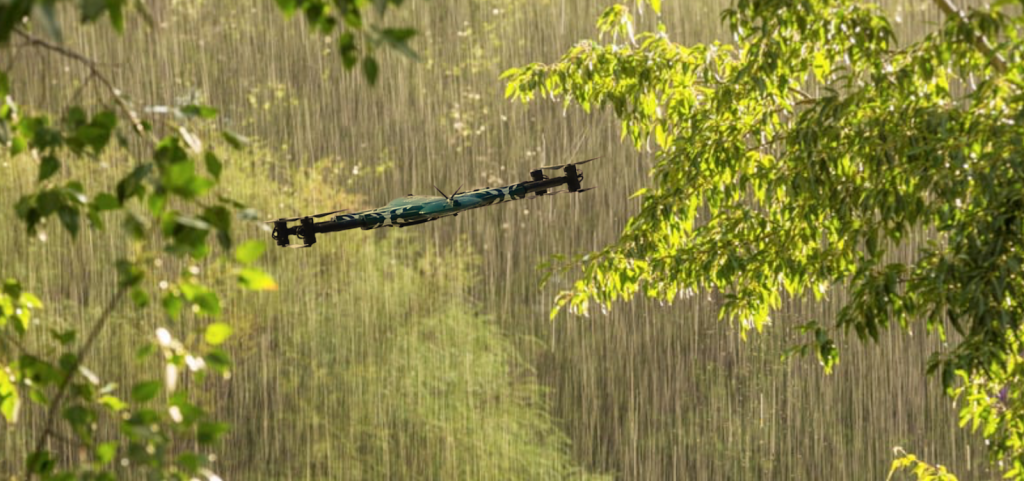
Flying Drones in Rainy Weather
Many hobbyists and professionals frequently inquire about drones that can operate in the rain. The drone’s type and waterproofness determine its safety. Knowing how your drone handles wet weather helps you decide when and where it’s okay to fly.
How Safe Are Drones Designed for Rainy Weather
When it comes to moisture, not all drones are made equal. Some can deal with light rain or the occasional splash, while others, like the Zenadrone 1000 with an IP67 rating, can manage more serious wet conditions, including quick submersions. Still, flying in heavy rain isn’t usually recommended.
In short:
- Most waterproof UAVs are fine in moderate rain.
- Water-resistant models should avoid too much moisture.
- Drones with higher IP ratings give you better protection in rough weather.
It’s best to always double-check the manufacturer’s guide before flying. Drones that can fly in the rain, especially those with sealed compartments and solid ratings, will hold up better out there.
Common Problems When Flying Drones in the Rain
Even excellent waterproof UAVs have limits. Risks include:
- Short circuits or electronic issues if water sneaks in
- Battery trouble, especially if it gets damp
- Foggy camera lenses if the seals aren’t working properly
Safety Tips for Flying Drones in Wet Weather
- Don’t fly in heavy downpours or during storms
- Inspect all seals, gaskets, and battery compartments beforehand
- Keep flights short and smooth to reduce water exposure
Take the proper precautions; your drone in the rain should fly just fine, even with a few drops coming down.
What Makes a Drone Waterproof?
Knowing what sets a waterproof UAV apart from regular ones is essential to pick the right kind for your needs. These drones are built with innovative design and special materials that let a drone fly in the rain, handle water, and even the occasional dunk without breaking down. Here’s a brief look at what makes a drone waterproof and able to perform in more challenging conditions.
IP Ratings: What Do They Mean?
- The first thing to check is the IP (Ingress Protection) rating. This rating tells you how well a drone is protected against water and dirt. For example, a drone with an IP67 rating can survive underwater up to one meter for about 30 minutes. Some even go further—IP68 drones can handle harsher conditions and more extended submersion. If you’re planning to fly near water, the rating matters.
Seals and Special Coatings
- It’s not just about the rating. Waterproof UAVs also have rubber seals, O-rings, and water-repelling coatings. These keep water from essential parts like the battery, motors, and camera lens. This technique is beneficial when flying a drone in the rain or low over lakes or the sea.
Waterproof Camera Drones
- If you need a drone for filming, the camera system needs just as much protection. Drones like the Zenadrone 1000 have sealed camera housings and protective lens covers to keep footage sharp and the equipment safe from moisture.
Protected Motors and Batteries
- Motors and batteries are housed in sealed compartments to stay reliable in wet conditions. This procedure keeps water out, even if the drone splashes or lands briefly on water.
Together, these features make waterproof UAVs capable of following you reliably, even in challenging conditions like rain, over rivers, or where water poses a constant risk.
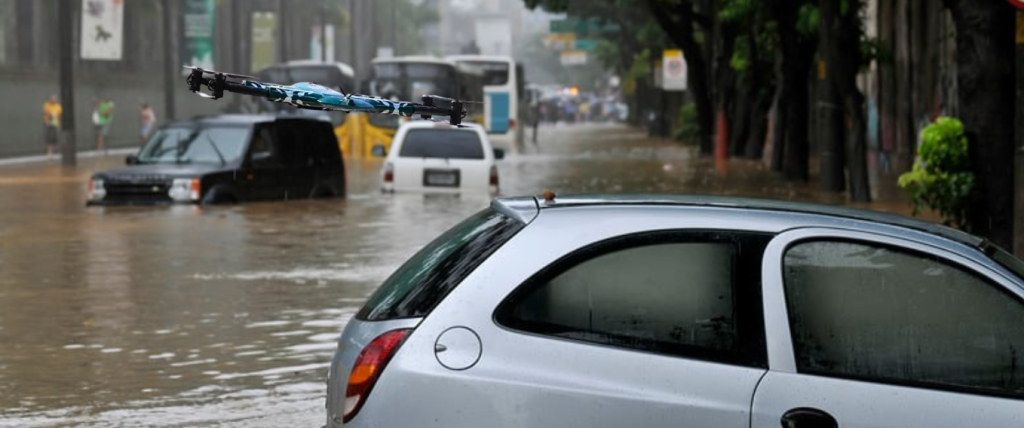
Key Benefits of Flying Waterproof Drones
Owning a waterproof drone comes with many benefits, especially if you’re often flying in places where water’s difficult to avoid. Knowing what makes these drones worth it can help you get the most out of them, whether flying for fun, taking photos, or using them for work.
Tough in Bad Weather
- Waterproof UAVs are built to handle rougher weather, like rain, mist, or even snow. Unlike regular drones that can easily get wrecked if wet, these are made to keep going. That makes them ideal for outdoor stuff like filming or security.
More Things You Can Do
- If you’re into photography or video, waterproof UAVs let you shoot in conditions you’d generally avoid. You can fly over lakes, beaches, or during light rain without stressing about the drone getting ruined. This versatility makes them a good pick for both pros and hobbyists.
Handles Accidents Better
- Sometimes drones end up splashed or dunked by accident. Waterproof models are built to survive those slips, which is helpful if you fly near water. You won’t have to panic as much if it gets wet.
Saves You on Repairs
- Waterproof UAVs are less likely to break down since they deal with moisture well. That way, you’ll save money on fixes or new parts, especially if you always use your drone.
So, suppose you’re thinking about flying near water. Waterproof UAVs give you more flexibility, last longer, and deal with weather changes, making them a brilliant pick.
Misunderstandings About Waterproof and Water Resistant Drones
A waterproof drone is ideal for wet weather, but many questions remain about what they can do.
All Drones Are Waterproof
- Not exactly. Most drones don’t protect against all water, but are usually water-resistant. A few drones have waterproof features, tightly sealed parts, and high IP ratings, so they can handle being underwater.
They Can Handle Any Kind of Water
- Well, not quite. Even drones with excellent IP ratings like IP67 or IP68 aren’t indestructible. Drones can withstand splashes and quick dips, but prolonged submersion or flying in heavy rain can still cause damage.
You Can Submerge Them Forever
- Not. These drones are made to survive short underwater trips, not stay submerged for ages. Saltwater’s even worse. It can wear down parts if you’re not careful.
Waterproof Means Indestructible
- Unfortunately, no. They may still sustain damage if you don’t properly care for them. Corrosion, powerful currents, or freezing temperatures can all cause problems over time.
Heavy Rain Is Always Fine
- Depends. Light to moderate rain is usually okay, but flying in a storm or strong winds is risky, even for waterproof camera drones. It can mess with your control and cause crashes.
No Maintenance Needed
- Not true. You must still clean your drone, check the seals, and ensure everything works. If water gets in or something wears out, you’ll have issues.
Bottom line? Waterproof UAVs are tough, but not magic. Knowing their limits helps you fly smarter and keep your drone in excellent shape.
Waterproof Drone Care and Maintenance Tips
Taking care of your FPV waterproof drone is essential if you want it to last long and keep working as it should. Even though it’s built to handle wet conditions, skipping maintenance can cause problems like rust or battery failure. Here are a few tips to help keep your drone in excellent shape:
Rinse After Flying in Wet Areas
- If you’ve been flying in the rain or over the ocean, it’s a beneficial idea to rinse the drone with clean water, not soak it, just enough to wash off salt or dirt. Saltwater can eat away at parts if you leave it on. Make sure to dry everything off after.
Check the Seals and Coating
- Periodically inspect your drone. Look at the rubber seals, gaskets, and hydrophobic coatings. If anything looks cracked or worn out, it might let water in. Better to replace it early than wait for it to fail mid-flight.
Store It Properly
- Don’t just leave it lying around. Store the drone in a dry place, preferably inside a case. Avoid hot or freezing spots since they can also mess with the internal parts.
Keep Motors and Battery Clean
- Motors can pick up sand or gunk, and batteries don’t like moisture. Use a dry cloth, not water, to gently clean these parts. And never dunk the battery in water, even if the drone is waterproof.
Test Before Long Flights
- Before taking it out on a long job or flying it in rough weather, do a short flight first. That way, you’ll know if everything’s working right and the waterproofing’s still holding up.
It doesn’t take much to keep your waterproof UAVs in great shape; it just takes some regular care. Do that, and it’ll stay reliable for a long time.
Waterproof Drone Issues and How to Fix Them
Even these drones can face issues after exposure to wet conditions. Here are common problems and solutions:
Water Leakage
Solution: Inspect seals and gaskets; replace worn parts and ensure compartments are tightly closed.
Battery Drainage
Solution: Dry the battery, store it in a cool, dry place, and replace it if it is corroded.
GPS Failure
Solution: Recalibrate GPS settings or fly in clearer weather.
Reduced Flight Time
Solution: Monitor battery levels, fly shorter durations, and ensure a full charge before flights.
Camera Malfunctions
Solution: Dry the lens area, check for moisture, and use anti-fog solutions.
How Waterproof Drones Perform in Real Scenarios
Several industries use these drones for tasks that require them. Here are some examples:
Search and Rescue
When floods or natural disasters happen, these drones are crucial. They are able to fly in tough weather to check areas, drop off supplies, and search for missing people.
Environmental Research
Scientists use drones built for the elements to monitor marine life, rivers, and wetlands. They collect information from remote places and monitor wildlife or check water quality.
Recreational Use
Regular users favor flying these drones close to water or during rain. Some models make it possible to race drones in harsh weather.
Conclusion: Are Drones for Rainy Conditions Worth It?
A waterproof drone is a good pick for anyone flying in areas with rain or unexpected weather, whether for a job or fun. Because they can deal with rain and rough weather, they’re often used in search and rescue, environmental monitoring, or outdoor photography. Of course, they aren’t perfect. Don’t forget to maintain them, keep up on maintenance, and know what they can and can’t do. Most people who want to fly near water or in adverse weather will choose these drones. It means your gear will last longer, you’ll save money, and you’ll have more options for flying.
Frequently Asked Questions (FAQ)
Are all drones waterproof?
No, not all. Most drones are only water-resistant; they can handle splashes, but not full immersion. These drones are specially built with sealed components and high IP ratings.
Will Water Damage My Drone
Water can damage the motors, battery, or circuit board if it isn’t waterproof. These drones are better protected, though they still need regular maintenance.
Can I Use My Drone When It’s Raining
Yes, some can. These drones with proper ratings like IP67 can fly in light to moderate rain, but flying in heavy storms is risky.
Can I Fly a Drone Near Water or in Damp Environments
Yes, these drones are made for flying over water, in rain, or even in light snow. Still, too much saltwater exposure can cause issues over time.
Which Waterproof Drones Come with High Quality Cameras
Models with 4K resolution and stabilized gimbals, like the Zenadrone 1000, usually offer the best image quality for wet conditions.
Contact Us
Thank you for your message. It has been sent.
Latest Posts
Social Profiles






